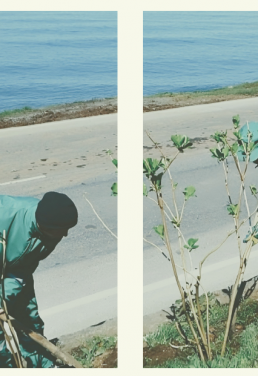საერთო ცხელი ხაზი +995 577 07 05 63


During the last decade, economic growth was recorded in Georgia. Before the pandemic, the gross domestic product (GDP) grew by an average of 4.8% annually.[1] As a result, Georgia belongs to the group of upper-middle-income countries in terms of GDP per capita[2]. Its GDP per capita in 2021 was $5,023; in 2022, it reached $6,671[3]. At the same time, poverty and unemployment have declined. In the last twelve years, the absolute poverty indicator has improved by 20 percentage points: in 2010, the absolute poverty level was 37.3%, in 2021, it decreased to 17.5%[4]. As for unemployment, in 2012, it was 27.2%; ten years later, in 2022, it decreased by ten percentage points and is 17.3%[5].
Despite the promising figures, there are a number of indicators that show that the level of well-being does not necessarily increase proportionately. For example, despite the decrease in the absolute poverty level, the population’s dependence on the state subsistence allowance is increasing. A subsistence allowance is a direct cash transfer from the state budget and is allocated only to families living below the national poverty line. A record number of people below the poverty line depend on targeted social assistance - in 2011, 411,091 people (10.9% of the total population) benefited from the program, and in 2022 - 680,000 (18% of the total population)[6]; Therefore, compared to 2011, we have a 65% increase in the coverage of this program[7].
On the other hand, decreasing unemployment statistics should be contrasted with an increase in the number of economically inactive population, an increase in the number of people who are not even registered in the unemployment statistics because they are no longer looking for a job. Between 2010 and 2015, the share of the economically inactive population in the country decreased significantly, but during the following 6 years (2015-2021), this indicator increased again, and now it returned to the 2011 levels.
After the pandemic, the share of the economically inactive population has been decreasing for the last two years, but overall we have 1,437,000 economically inactive inhabitants (i.e. 48% of the population, when the global average is 39%)[8][9]. In addition, in Georgia the level of employment and the number of employed people have been growing at a very slow pace (or almost not growing) during the last ten years. Since 2015, the employment level has been declining, but in 2022 it has returned to the level of 2015-2016 and is extremely low at 43% (1,283,000 people)[10].
The public opinion polls also demonstrate that positive macroeconomic indicators - economic growth and reduction of absolute poverty- do not stand for our citizens' increased well-being. For example, in early 2022, according to a survey by the National Democratic Institute (NDI) and the Caucasian Research Resource Center (CRRC), 75% of citizens believed poverty had worsened in the last ten years. According to NDI, the perception of poverty among Georgian Dream (GD) supporters also worsened. In particular, 51% of GD voters indicated that the situation in regard to poverty has worsened, while in the case of opposition voters, this number equals to 88%[11].
Against the abovementioned dissatisfaction, the migration balance has been negative for the last 10 years (with a small exception, in 2020 due to the Covid pandemic)[12]. Along with the natural population decrease observed in recent years, we also have a decline in the labour force. Compared to 2010, the workforce in Georgia is 125,000 less[13].
The factors listed above are largely elements of the macroeconomic reality, and this paper is devoted to the social policy created in its response, particularly to the new instrument of the social policy in Georgia – the public employment program. Before we talk about the scope and budget of a specific program, let's look at the expenses of the state budget of Georgia. The share of "social" spending in the total budgetary expenditures (including pensions, health care, and social benefits) has generally increased since 2005. From 2012 to 2013, the share of it increased from 26% to 32%; In 2019 (pre-pandemic period), the share of these expenses was 37%, and in the pandemic years (2020-21), for obvious reasons, it reached a peak of 43%. However, despite the fact that the pandemic is over and the amount of money allocated to the management of the diseases caused by the "coronavirus" has already been reduced (39%), the largest amount in the 2023 state budget plan, 6.4 billion GEL, still goes to social expenses (which includes pensions, health care, and social assistance includes)[14]. Also, due to the high reliance on direct cash transfers administered as subsistence allowances, the amount of money distributed to subsistence allowances is increasing. When in 2016, the total budget for living allowances was 270 million, in 2022 it was 609 million[15]. In part, the result of increased social spending is the decrease in the level of absolute poverty in the country, but here comes the question, with increased social spending, do we achieve the goal of families overcoming social exclusion and socioeconomic vulnerability, or are we simply increasing families' dependence on social welfare systems?
Given the reality presented, the paper focuses on the new type of social spending, which, in the name of the public employment program, was first added to the social spending of the state budget in 2022, and whose budget, from 2023, amounts to 80 million. The public employment program is the main focus of the research as it is being proposed as an entirely new social policy tool that seeks to alleviate poverty and address unemployment. By the time of the research, the program had been implemented for only one year, but the program was extended for one another year without assessing the results of the implementation of this program from the first year. According to the budget of 2023, the total amount of the labour and employment system budget has almost doubled and reached 80 million GEL.[16]
In the study’s introduction, it is worth mentioning the scepticism that accompanied the possible success of the program. The program was designed to reduce dependence on social benefits, but could it really achieve it? And how cost-effective will the result be? The program was created hastily, within a few months of its announcement. It is obvious at first glance the public agencies did not properly understand the theory of change with which they were starting the fight against poverty and unemployment. At the same time, the program’s success was always questioned by the fact that a complex combination of social instruments is needed to change the situation of poverty and unemployment in the country: care services, unemployment insurance, housing policies for the homeless, and others. Without this ecosystem, the public employment program is formed in a fragmented manner.
Although the increase of social expenses in proportion to GDP growth is a step in the right direction (in these terms, Georgia lags behind even the most liberal economic states in the developed West, also because we do not have unemployment benefits, housing subsidies, etc. (Gugushvili, 2017)) we know that it is no less important for Georgia to grow the efficiency of social spending, gradually reduce the level of dependence on social benefits among the population and ensure a fairer distribution of social spending (Georgian Human Capital Review, 2022). It is very weakly substantiated for the general public how the public employment program can serve the above-mentioned objectives. Critical observation of the program is even more important as no public or political organisation has yet made a professional or political comment on this issue, despite the program being launched for a year. It is with this interest that this publication will try to answer the main question, what are the main challenges that the public employment program is responding to (what was the purpose of its creation) and how much does it contribute to the fair distribution of social spending or to the reduction of dependence on subsistence allowances (how well does it reach its target population and indicators).
[1] Georgia Human Capital Review (2022) International Bank for Reconstruction and Development/The World Bank. Available at: https://documents1.worldbank.org/curated/en/099435008172221325/pdf/P1735300c417d2026096d50dd8d8218cd90.pdf (Accessed: April 11, 2023)
[2] The World Bank (2023) World Bank Country and Lending Groups. Available at: https://datahelpdesk.worldbank.org/knowledgebase/articles/906519-world-bank-country-and-lending-groups (Accessed: April 11, 2023)
[3] Geostate (2023) Gross Domestic Product (GDP). Available at: https://www.geostat.ge/en/modules/categories/23/gross-domestic-product-gdp (Accessed: April 11, 2023)
[4] Geostate (2023) Poverty and Gini Coefficients Available at: https://www.geostat.ge/ka/modules/categories/192/tskhovrebis-done (Accessed: April 11, 2023)
[5] Geostate (2023) Employment and Wages. Available at:
https://www.geostat.ge/en/modules/categories/37/employment-and-wages (Accessed: April 11, 2023)
[6] Social Services Agency of the LSI (2023) The number of the population receiving living allowance in different groups of the rating point. Available at: https://ssa.moh.gov.ge/statistik.php?lang=1&id=202212070002225855299551#page-2 (Accessed: May 8, 2023)
[7] Pertaia Luka (2023) 672 thousand people receive social benefits - this is a historical maximum. Radio Tavisupleba. Available at: shorturl.at/joIJS (Accessed: March 2, 2023)
[8] Geostate (2023) Statistical information, employment, wages, employment-unemployment. Available at: https://www.geostat.ge/en/modules/categories/37/employment-and-wages (Accessed: April 11, 2023)
[9] ILO (2019) Persons outside the labour force: How inactive are they really? Available at: https://ilostat.ilo.org/persons-outside-the-labour-force-how-inactive-are-they-really/#:~:text=It%20is%20wrong%20to%20assume,or%20own%2Duse%20production%20work (Accessed: April 11, 2023)
[10] Ibid.
[11] Geostate (2023) Statistical information, employment, wages, employment-unemployment, Available at: https://www.geostat.ge/en/modules/categories/37/employment-and-wages (Accessed: April 11, 2023)
[12] Ministry of Economics and Sustainable Development (2023) Analysis of the Labour Market of Georgia, p.15 Available at: https://www.lmis.gov.ge/Lmis/Lmis.Portal.Web/Handlers/GetFile.ashx?Type=UserReport&ID=6d62d354-2f42-4614-9038-fdaea4c0d13d Accessed: April 11, 2023
[13] Geostate (2023) Statistical information, employment, wages, employment-unemployment. Available at: https://www.geostat.ge/en/modules/categories/37/employment-and-wages (Accessed: April 11, 2023)
[14] Transparency International Georgia (2022) Brief analysis and recommendations of the 2023 state budget project, Available at: https://transparency.ge/ge/post/2023-clis-saxelmcipo-biujetis-proektis-mokle-analizi-da-rekomendaciebi (Accessed: April 11, 2023); Ministry of Finance of Georgia (2023) 2023 State Budget - Chapter III, Available at: https://www.mof.ge/5603 (Accessed: April 11, 2023)
[15] Social Service Agency (2023) Statistics. Available at: https://ssa.moh.gov.ge/statistik.php?lang=1&id=202212070000144333422303&v=0#page-1 (Accessed: April 11, 2023)
[16] Ministry of Finance of Georgia (2023) State budget of 2023 - Labour and Employment System Reform Program. Available at: https://www.mof.ge/5603 (Accessed: April 11, 2023)
The website accessibility instruction